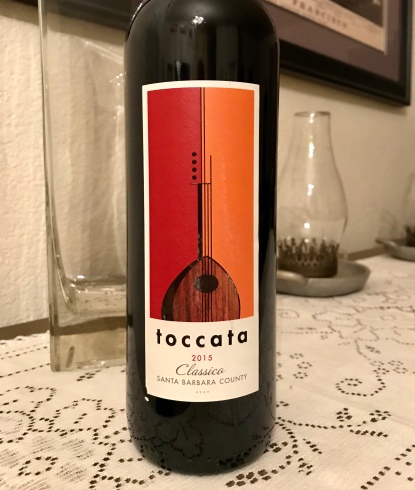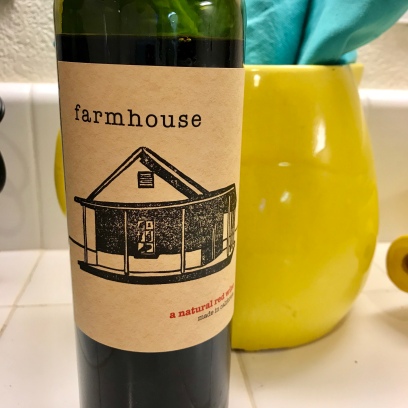I first learned about Toccata wines several years ago, when one of their sales reps was hosting a tasting at a wine bar near my home. I happened in, by happy coincidence, and was immediately impressed by the quality, complexity, and character of the wines. Alas, the wines are not widely distributed, so Toccata was difficult to find and enjoy regularly.
The Toccata label is owned by Lucas & Lewellen Vineyards, a family owned estate in Santa Barbara County. I’m fairly certain the Toccata tasting all those years ago was the first Santa Barbara wine I had experienced. Lucas & Lewellen is fairly well known to travellers along Highway 101 south of Paso Robles, as their large estate vineyards are adjacent to the highway, and are well marked with signs identifying ownership and often the variety of grape.

Years after that original Toccata tasting, my son started college at U.C. Santa Barbara; another happy coincidence. During the hours-long drives from Northern California to visit, as I passed the Lucas & Lewellen vineyards, I was reminded of the Toccata wines I had enjoyed. When I discovered that Toccata has a tasting room, just a few miles off Highway 101 in the quaint village of Solvang, I was thrilled to be able to enjoy these wines again while also enjoying time with my son, and the beauty of Santa Barbara. Still, once he graduated, and my regular trips to Santa Barbara came to an end, so did my ready access to Toccata.
To my sheer delight, I was recently offered a sample of the Toccata Classico 2015. There was no hesitation in my affirmative response to the offer!

Toccata wines are all Italian varieties and styles. Toccata Classico is a red blend made in the Super Tuscan style. The fruit comes from two estate vineyards; Los Alamos Vineyard in the Santa Barbara AVA and Valley View Vineyard in the Santa Ynez Valley AVA. The 2015 is composed of 50% Sangiovese, 30% Cabernet Sauvignon, and 5% each of Merlot, Cabernet Franc, Freisa, and Petit Verdot. Here’s what we thought of it:
The following wine was provided as a media sample for review. All reviews, descriptions, and opinions are our own. We received no additional compensation.
Rich, deep purple with ruby rim. Initial nose is vanilla, with ripe red berry. On the palate, flavors of ripe raspberry, blackberry, and cassis, with baking spice, vanilla, tobacco, white pepper, and toasty oak. Firm, chewy tannins, with medium acidity. Rich and full bodied. The finish is long with red and black fruit, oak, and black pepper.
SRP $29.00 per bottle
Perfect for Italian cuisine, and also fantastic with other genres of food, too. We loved it with Pan Seared Filet Steaks with Gorgonzola and Caramelized Onions. Sheer delight! 
If you are in the Santa Barbara area, be sure to take a detour out to Solvang and visit the Toccata tasting room. It’s well worth the trip!
Cheers!
- By Kent Reynolds
- Photo credit, except where noted, and inspiration by Robyn Raphael














